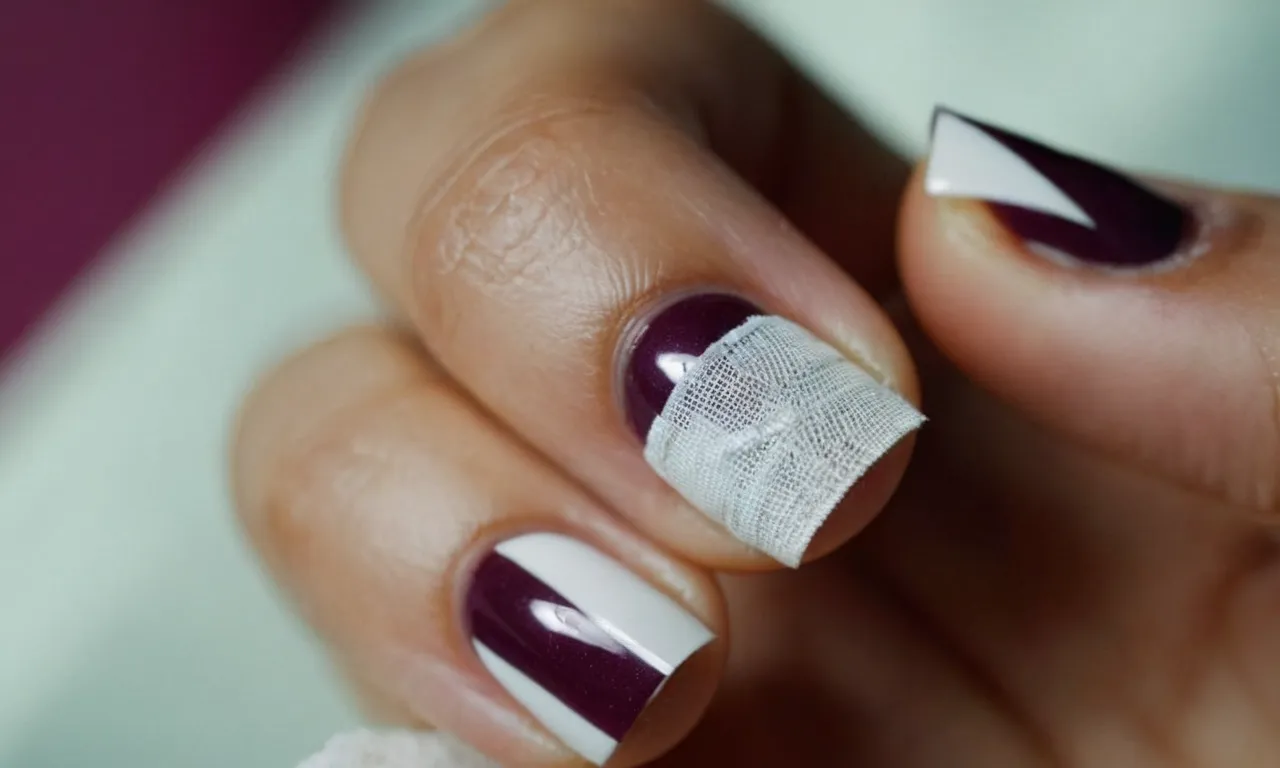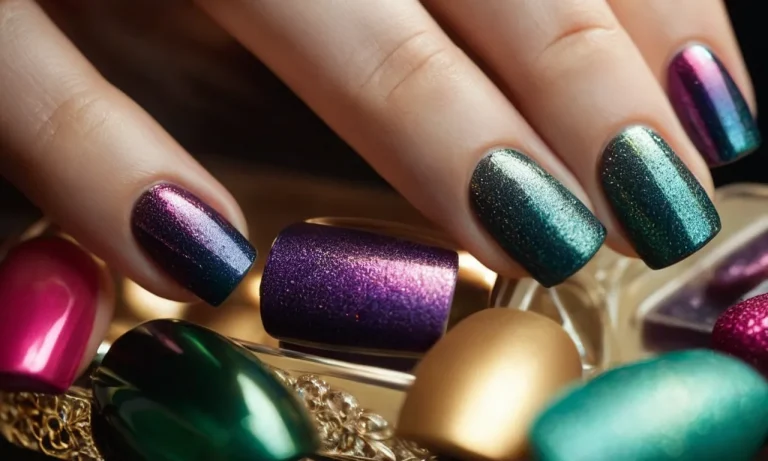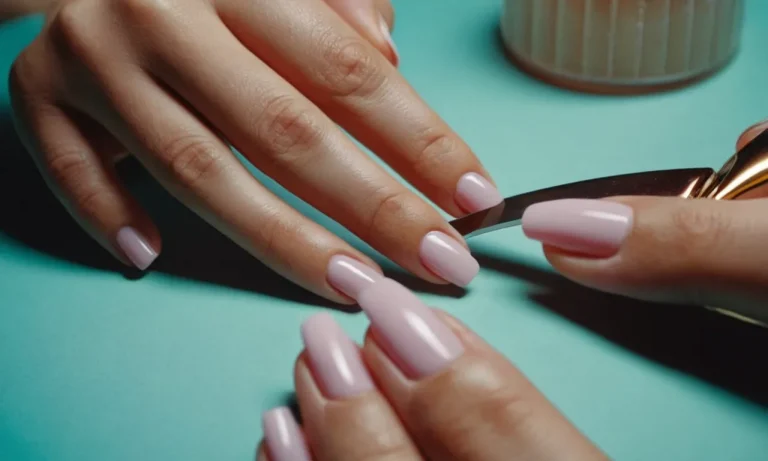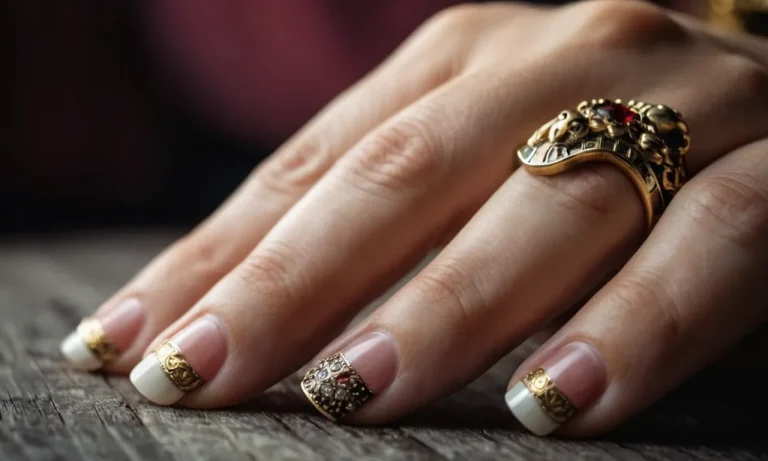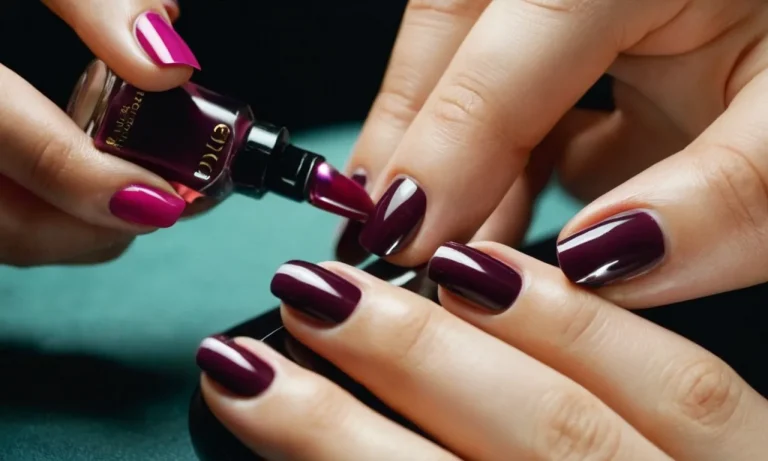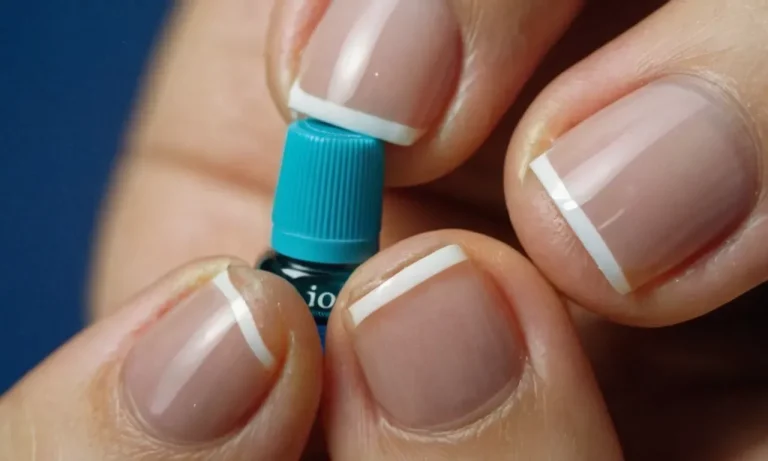I Got Cut At The Nail Salon – Should I Be Worried?
Getting your nails done at a salon can be a relaxing experience. However, it can quickly turn stressful if you get cut or nicked during the process. If this happens to you, it’s natural to be concerned about potential health risks.
The quick answer is – while nail nicks and cuts can be uncomfortable, they’re usually not a major cause for concern as long as you care for the wound properly. You’ll likely be okay in a few days.
In this comprehensive guide, we’ll cover everything you need to know about nail salon cuts. We’ll look at the common causes, signs of infection to watch for, when to see a doctor, how to care for the cut properly at home, and steps you can take to help prevent cuts during future manicure or pedicure appointments.
What Causes Cuts and Nicks at Nail Salons?
Sharp Nail Tools
Visiting the nail salon can be a relaxing self-care routine, but sometimes things can go wrong. One of the most common issues is getting cut or nicked during a manicure or pedicure. This is often caused by the sharp tools used to shape and trim the nails.
Nail clippers, cuticle nippers, filing tools, and callus razors all have sharp edges that can easily break the skin if used carelessly. Rushed or inexperienced technicians may handle these tools roughly without paying close attention. Even a minor slip can cause a painful cut or hangnail.
To avoid this, make sure your technician sterilizes tools properly and takes time to work cautiously. You can also request round-edged clippers or files rather than standard sharp types.
Rushed Technicians
Another factor that often leads to cuts and nicks is having a technician who rushes through procedures. When nail salon workers feel pressed for time or have too many clients to care for, they may work too quickly to get through appointments.
This can mean not taking enough care when using potentially dangerous tools around the sensitive skin of your fingers and toes. Cuts are more likely to happen when proper time and attention are not given.
Before your appointment, look for reviews of the salon and request an experienced technician who won’t feel rushed. A good technician will carefully sterilize and inspect tools, work methodically, and take precautions like trimming nails over a table rather than your lap.
If you ever feel they are hurrying or ignoring safety, do not hesitate to speak up.
Moving Hands and Feet
Cuts and nicks can also happen if you move your hands or feet unexpectedly while a technician is working. For example, if you twitch your fingers while clippers are in use, it’s easy to get nicked. Some people have trouble keeping still during a manicure, especially if they are ticklish.
Try to control involuntary movements and let the technician know if you are very ticklish. Avoiding sudden shifts in position is especially important during pedicures, when your feet are often soaking in a basin of water.
If you jerk or kick suddenly, the technician’s tools can easily slip and break the skin. Stay still to the best of your ability and follow any instructions from your technician. If you do receive a cut, speak up right away so it can be promptly cleaned and bandaged.
While cuts and nicks are common nail salon mishaps, they can usually be avoided with proper precautions. Sterilized, well-maintained tools, an unrushed technician, and still hands and feet will minimize the chances of getting injured.
But if you do receive a minor cut, there’s likely no need to worry as long as it is cared for properly. Just be sure to watch for signs of infection and contact your doctor if any appear.
Signs of Infection
Redness
One of the most common signs of an infection after a nail salon visit is redness around the affected area. This redness is caused by increased blood flow to the infected site. The redness may start out subtle, but can become more pronounced over time as the infection worsens.
Some key things to look out for include:
- Redness spreading beyond just the cuticle area
- Bright redness that looks inflamed
- Red streaks spreading from the infection site
If the redness continues to worsen or spread, it is important to see a doctor, as this could indicate a deeper tissue infection requiring antibiotics. Don’t try to just cover it up with nail polish!
Swelling
Another symptom that often accompanies redness is swelling around the infected area. This swelling is caused by inflammation and fluid build-up as your body tries to fight off the infection.
Swelling may start out very subtle, but can increase over the days following the nail salon visit. The skin around the nail may look slightly puffy or raised. Over time, the swelling can increase and the area may feel tight, warm and painful.
Significant swelling around the nail/finger is not normal and requires medical attention. If left untreated, the swelling can worsen and potentially affect healthy tissue as well.
Drainage
One of the surest signs of an infected nail or cuticle is drainage or pus oozing from the area. This type of drainage is thick, opaque-colored, and often foul-smelling.
The drainage is composed of dead tissue, white blood cells, and bacteria. As your body tries to fight off the infection, white blood cells rush to the area, die, and accumulate as pus that will need to drain out.
Any sort of yellow, green or brown discharge around a nail or cuticle needs to be examined by a doctor right away, as it indicates a severe infection is present.
Increased Pain
Most people expect some degree of pain or throbbing immediately after a minor nail cut or injury. However, this pain should gradually improve over the next few days as the cut heals.
If you notice the pain getting worse instead of better after a nail salon visit, take it as a warning sign. Increased throbbing, sharp pain or pain that seems to spread from the original cut could mean an infection is brewing.
The infection causes inflammation, which puts pressure on nerve endings in the finger and results in increased pain. Any worsening pain around the nail should be promptly examined.
Fever
One of the more serious signs of infection is fever or flu-like symptoms. This means the infection has spread into the deeper tissues or even entered the bloodstream.
Infection can trigger an immune response, causing body aches, chills, and fever as the body tries to fight it off. If you develop a fever greater than 100.4°F, it is crucial to seek medical care to prevent the infection from spreading systemically.
In rare cases, nail infections can even develop into sepsis – a life-threatening reaction to severe infection. So do not ignore flu-like symptoms, as they could indicate something much more serious than just a localized cuticle infection.
When to See a Doctor
Deep Cuts
If you experience a deep cut at the nail salon that bleeds significantly, it’s important to see a doctor right away. Deep cuts that sever nerves, tendons, or cuticles often require stitches and prompt medical care to prevent infection and ensure proper healing.
Don’t wait with a deep cut – seek emergency care or visit an urgent care clinic as soon as possible after the incident.
Signs of Infection
Some key signs of an infected nail or cuticle after a salon visit include:
- Increasing pain, swelling, warmth, or redness around the affected area
- Green, yellow, or foul-smelling pus or discharge
- Red streaks extending from the cuticle or nail
- Fever or flu-like symptoms
If you notice any of these warning signs within a few days of your salon visit, promptly contact your doctor to get the infection under control. Left untreated, the infection can spread to your bloodstream and become serious very quickly.
Diabetics and Those with Compromised Immune Systems
People with diabetes, HIV, or weakened immune systems due to illness or medical treatments are at higher risk for developing nail and cuticle infections after small cuts at the salon. For these high-risk groups, it’s wise to closely monitor the cut area and watch for early signs of infection.
At the first hint of trouble – increased swelling, redness, drainage – contact your doctor right away. Treating infections early is critical for those who may have a harder time fighting off germs.
As a precaution, those with compromised immunity may also opt to bring their own manicure tools to the salon or choose salons that use autoclaved, sterile equipment for each customer.
While most minor nail nicks heal without issue, it pays to be vigilant after a salon visit, especially if you have risk factors like diabetes or a weakened immune system. Trust your instincts – if the cut seems deep or just doesn’t look right, don’t wait.
See a doctor promptly for assessment and care. With timely treatment, you can get back to beautiful nails in no time!
Caring for a Nail Cut at Home
Clean the Wound
If you get cut at the nail salon, the first thing to do is clean the wound. Rinse the cut under running water for a few minutes to remove any dirt or debris. You can use mild soap if needed. Be gentle when cleaning as you don’t want to further irritate the injury. Pat dry with a clean towel.
Apply Antibiotic Ointment
After cleaning, apply an antibiotic ointment like Neosporin to the cut. This will help prevent infection and speed healing. Gently spread a thin layer over the wound using a cotton swab. You can apply the ointment 1-3 times per day, or according to product instructions. Using an antibiotic ointment is highly recommended for minor cuts and scrapes.
Cover with a Bandage
Cover the cut with a bandage or adhesive bandage to keep it clean and protected. Change the bandage daily or whenever it gets dirty or wet. Make sure to wash hands before and after changing bandages. Some types of bandages to consider are:
- Adhesive bandages – These stick directly over the cut.
- Gauze and medical tape – These allow air flow to the wound.
- Fingertip bandages – These wrap around the tip of the finger for nail cuts.
Watch for Signs of Infection
Keep an eye on the cut over the next several days. Signs of an infected nail cut include:
- Increased pain, swelling, or redness
- Green or yellow discharge
- Fever
See a doctor if you notice any signs of infection. They can properly diagnose and treat an infected cut.
Let it Heal
With proper first aid care at home, most minor nail cuts will heal within a few days. Try to keep the area clean and protected as the wound heals. Avoid biting or picking at nails near the cut as they regrow. If the cut is severe or doesn’t seem to be healing, see your doctor.
Preventing Cuts During Manicures and Pedicures
Choose a Reputable Salon
Selecting a renowned and well-reviewed nail salon can help prevent cuts. Reputable establishments adhere to strict sanitation guidelines and properly disinfect tools. They employ licensed technicians and inspect equipment regularly for signs of wear that could cause injury.
According to the Professional Beauty Association, verified salons score 90% or higher on safety inspections.
Speak Up About Discomfort
Tell the manicurist immediately if you feel any pinching or scraping during the process. Minor adjustments can remedy the issue before cuts or abrasions occur. Technicians appreciate the feedback, as it helps them provide quality service and avoid accidents.
Avoid Callus Removers
Pedicures sometimes utilize callus removers, harsh scrubs, or creams to soften thick, dead skin on the heels and balls of the feet. However, if used too vigorously, they can wear down healthy tissue and instigate cuts or sores.
Stick to gentle exfoliation and monitor the technician’s efforts carefully.
Sit Still During Procedures
While enjoying a relaxing spa manicure or pedicure, avoid sudden movements of hands and feet. Technicians use extremely sharp implements when trimming cuticles and nails. An unexpected twitch could lead them to slip and cause injury. Sit calmly and inform the staff before changing positions.
Keep Nails Trimmed
Cutting overgrown nails poses challenges, enhancing risks. Clip fingernails and toenails every 1-2 weeks to keep them neat and tidy. Well-maintained nails give technicians ample room to work safely. The shorter the nails, the less likely cuts will happen when filing shapes or removing polish.
Conclusion
While getting cut at the nail salon can be unpleasant, try not to panic. With proper at-home wound care and awareness of potential complications, most small nicks and cuts will heal without issue within a few days.
Be proactive by selecting an experienced technician, speaking up about discomfort, and sitting still during your service. If you take precautions and care for the cut properly, there’s no reason a minor nail salon injury should get in the way of beautiful nails.

